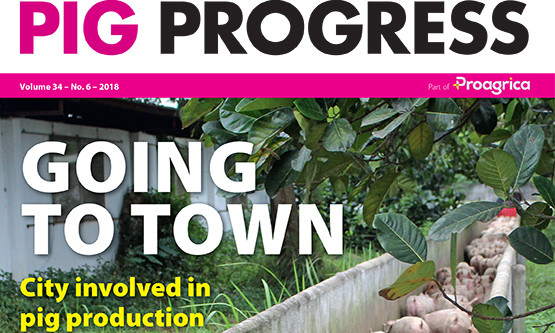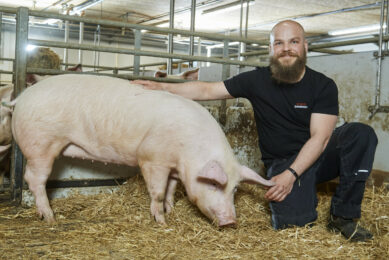Focus on sows in 6th edition of Pig Progress

Sows are at the centre of our attention in the 6th issue of Pig Progress. From breeding improvement to insights to help their offspring thrive, sows come back in a host of articles.
‘Fewer pathogens with egg immunoglobulins’ is the promising title of an interesting contribution by Dr Inge Heinzl and Dr Fellipe Barbosa. The authors, connected to EW Nutrition, explain in the article the importance of hygiene in the farrowing pen. If sows shed fewer pathogens, the less likely it is that the piglets will pick them up.
Adding egg immunoglobulins to sow diets can play a role in reducing E. coli and C. perfringens in sow manure, the authors explain on pages 24-25.
The future of the Danish sow breeding herd
Sows, breeding sows to be precise, are key in an interesting interview by Kees van Dooren. He travelled to Copenhagen, Denmark, to speak to Thomas Muurmann Henriksen, CEO of DanBred. The Danish breeding organisation recently went through a series of reorganisations. He explains how they hope to distribute the Danish genetics all over the world, pages 12-14.
Sow performance and minerals
Times are long gone when supplying minerals to pigs was a matter of one-size-fits-all. Sows have a different demand, depending on their parity, size and litter size, writes Dr Jules Taylor-Pickard of Alltech in an insightful contribution on pages 22-23. Supplying correct amounts will enhance sow performance, with benefit for her piglets too.

Swine farm visit: off to Vietnam
This month’s farm visit brings us to Vietnam, where Pig Progress editor Vincent ter Beek visited a new production facility of the Vissan Group, a swine farm with a very well-known owner… Pages 20-21.
Future Pigs symposium in Utrecht, the Netherlands
June was the month of international pig events, hence it is good to reflect and gather some of the major take-home messages that were shared across the globe.
Utrecht, the Netherlands was the venue of both VIV Europe and the Global Forum for Innovations in Agriculture (GFIA), mid-June. They were the perfect occasion to organise Pig Progress’ Future Pigs seminar, an interesting get-together with a number of innovative concepts which will bring swine production to the next level. Correspondent Melanie Epp attended and made a comprehensive summary on pages 16-17.
Interested to also view the presentations of these speakers? You can access each of them at the online version of this article as well.
Pig health event in China
Only 1 week prior to the VIV Europe, the International Pig Veterinary Society (IPVS) Congress took place in Chongqing, China. Developments were reported e.g. in the field of pig genetics and health, highly pathogenic PRRS and African Swine Fever. Pig Progress editor Vincent ter Beek looks back on pages 6-8.
Pig health: Biosecurity and copper levels
Some more on pig health: biosecurity matters take an increasingly larger role in good swine farm management. All types of tools can help to monitor the situation and make swine farm employees aware of their own behaviour. Poul Henning Rathkjen of Boehringer Ingelheim explains how several apps can help to gain a better insight. Pages 27-29

Also copper in animal feed is worth spending some attention to. In the European Union, regulations for maximum copper levels have been refined. Emmy Koeleman, editor for All About Feed found out what is the rationale behind the novel guidelines – and why these are better than initial proposals. Pages 30-31
Columns on moving pigs and sticker shock
Swine management columnist John Gadd writes that recalcitrant pigs can be very frustrating – so what are his ideas to get animals moving inside a farm? Find his thoughts on page 10.
Lastly, swine feed technology columnist Dr Casey Bradley discusses ‘sticker shock’, also a very well-known principle for pig producers, page 34.
To read all the articles in this issue, go to the magazine overview page and sign up with your current website login.











